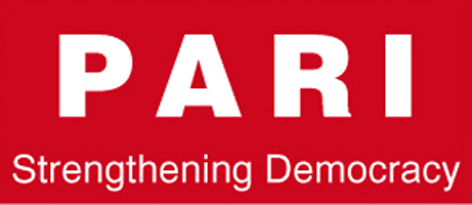-
- July 3, 2020
https://www.financialexpress.com/opinion/disastrous-management-ndmas-institutional-redundancy-and-the-mismanagement-of-covid-19-pandemic/2011789/lite/
By Dr. Narmadeshwar Prasad
[Director, Parliamentary & Administrative Research Institute (PARI)]
It is common knowledge that India’s National Disaster Manager Authority (NDMA) is the nodal agency to initiate processes to alleviate strife and suffering arising out of disasters—biological, chemical, physical or hydrological. It was created under the Disaster Management (DM) Act 2005, which vested in it overriding powers to make rules and regulations for preventing, containing, evacuating, providing relief and various other related activities in the interest of the suffering public. Therefore, befittingly the DM Act 2005 was invoked on March 25—the first lockdown.
The NDMA being a nodal body holds unprecedented (overriding) powers and responsibilities that are paramount to the successful control and management of disasters. It was expected of the NDMA to come out with a national plan of mitigation as per mandate of the 2005 DM Act. As Covid-19 is a fast-moving and highly contagious virus, control measures should have been taken up proactively by the NDMA, which was sadly missed. As Covid-19 made its presence in the urban-scape, swathes of easily identifiable, high density, low hygiene areas should have been evacuated.
Evacuation protocols practised by the NDMA during hydrological disasters should have helped them make policy decisions and implement guidelines for city-specific prevention and mitigation requirements. Even helping thousands of hapless poor migrants reach their destination safely was well within NDMA’s purview and State Disaster Management Authorities (SDMAs) duties.
NDMA, however, has been headless for a while now—for almost three long years. Also pertinent is the inadequate representation of members hailing from varied specialisations. As per the provisions of the DM Act 2005, the vice-chairperson, along with eight members, will head the NDMA and report to the prime minister, who is the ex-officio chairman. Sadly, there is no vice-chairperson, and only five members currently serve the NDMA. The Act also provides for the constitution of a National Executive Committee (NEC) headed by the secretary, ministry of home affairs—the administrative ministry of NDMA—to assist the Authority. . NEC is no longer assisting but is now in control, watering down the role of a national authority on disaster management.
As per the original scheme of things, the vice-chairman was to hold the rank of a cabinet minister, keeping in mind that he had to interact and coordinate with all the chief ministers. The members held the rank of a minister of state. Presently, the NDMA’s amended rules, vide notification number G.S.R..544(E) of July 30, 2014, allows for the vice-chairman to hold the rank of a cabinet secretary and that of the members—of a secretary to the government of India. This is a pull-down and marks a substantive change in the entire administrative character. In the absence of a vice-chairman, this bestows complete control to the home secretary.
A recent Order dated June 29, 2020, on the Guidelines for the Un-lockdown 2-significantly issued by the MHA with a copy endorsed to the members/member secretary to the NDMA—explains why vice-chairperson post is not being filled. This is also the reason states have been behaving as independent entities, refusing to receive migrant labour and closing their borders at will.
Of late, what we understand of NDMA is analogous with the very visible National Disaster Response Force (NDRF), with a rich corpus of NDRF funds which can be accessed by the NEC. Rs 11,000 crore has been provided from the NDRF fund to quarantine migrant labour returning to the states and assist them with food and medicine. But, it seems perplexing as to why the highly trained NDRF force, trained even for biological disasters, were not used to evacuate people from high density-low hygiene urban areas from the cities of Maharashtra, Rajasthan, Delhi etc, conduct tests and manage containment regions in the cities.
Now, two issues emerge. First, why was the official rank of the posts in NDMA diluted, while the PM continues to be the ex-officio chairperson? Without a cabinet minister rank in the authority, the PM being at the helm is unbefitting. Second, if a certain redundancy of the original structure was detected, why did the government not reframe the NDMA? Without any authority as per the DM Act 2005, NDMA is meaningless and an additional burden on the exchequer.
There is no information in the public domain about the compulsions under which the administrative structure of NDMA was downgraded. However, technically, the information to amend the service conditions of the members and vice-chairman was placed in Parliament on August 14, 2014. As per the parliamentary procedure a notification about change in service rules has to be submitted to both the Houses of Parliament, being available for scrutiny by the MPs for 30 days. But, as has been observed, MPs do not accord importance to notifications, and if objections are not raised, a notification is deemed to be passed after the stipulated period.
Perhaps the gaps in the management of the Covid-19 pandemic can be accorded to the invisibility of the NDMA, a body that was to have a singular role in a multitude of disasters, including biological ones. The lack of coordination between the centre and the states can perhaps be correlated with the reduced role of NDMA.
This structural fissure can, however, be amended if the PM should choose to empower the NDMA and appoint a suitable vice-chairman, reinstating the befitting rank in order to streamline the nation’s fight against the pandemic. Health scientists from the medical and community health sector can be placed as members to bolster a holistic approach. There are many such unknowns in the future, looming large is a cyber threat that is gaining more and more momentum as world dependency on AI, and IT-driven solutions grow.
A strong institution is no doubt, the requirement of the day.
The author is Director, Parliamentary and Administrative Research Institute (PARI), New Delhi.

